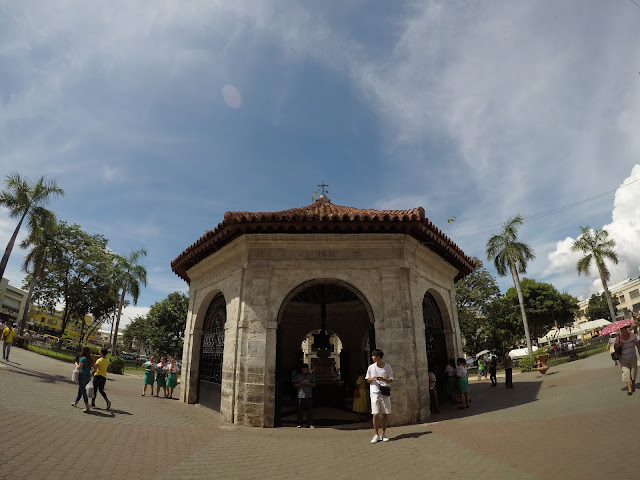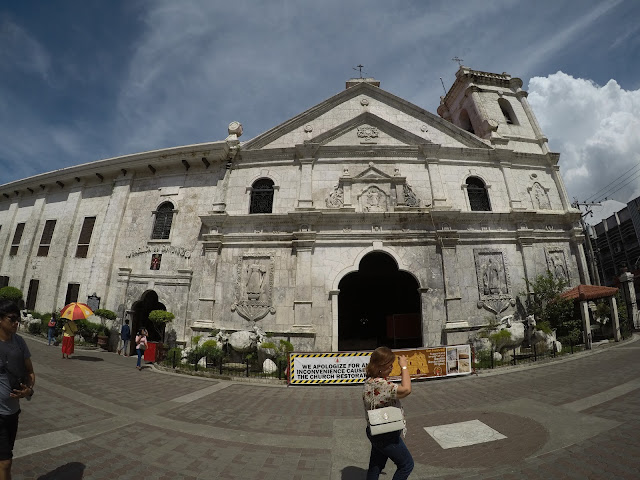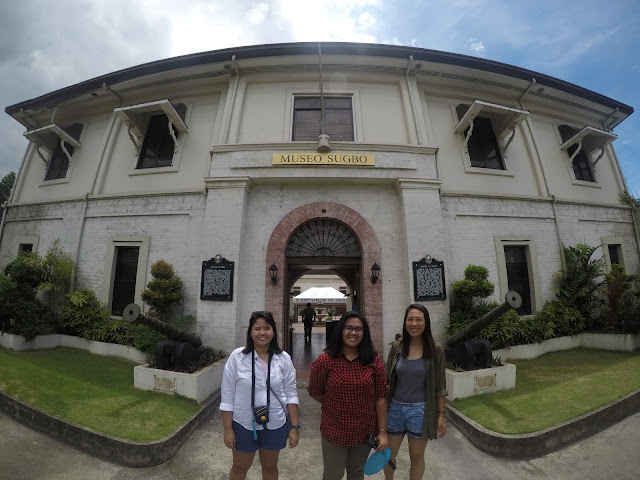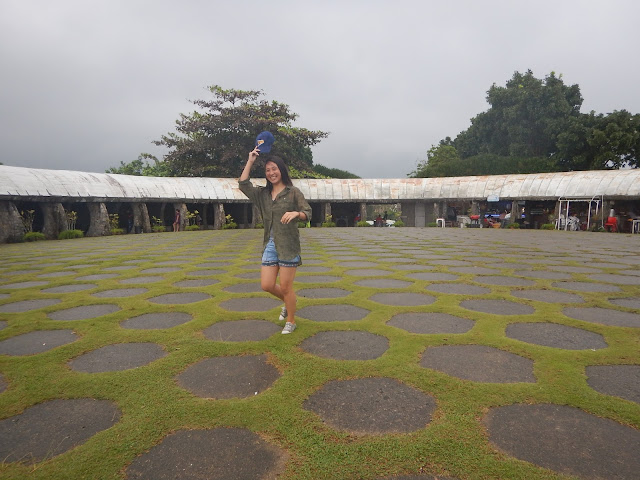Twin City Tour in Cebu
Being a Cebuano is an honor. Cebu has got its fair share of tourist destinations that people of different nationalities flock over to explore and discover. It’s always been a part of my bucket list to travel around the world (cause why the heck not?) and I always had this dream of touring around Cebu and even the whole Philippines. I believe there is so much to know more about the place where I was born.
Thus, it was both a surprise and a delight when I got invited for a twin city tour experience by South Shores Cebu. South Shores is a travel agency who specializes in giving ‘affordable and hassle-free’ tours. Their goal is to let people experience the beauty of Cebu by not spending too much. The Cebu twin city tour is just one of these tours.
The owner Mr. Joel Torres with his driver sir June, met with us at Ayala Center Cebu. I was surprised by the carpool that we got. We ere just like renting a private car, with a driver and a tour guide. After introducing ourselves and breaking the ice on our awkwardness, we started our twin city tour right away.
First Stop: Magellan’s Cross
We started our twin city tour at the Magellan’s Cross. It is located right at Plaza Sugbu, just across the Cebu City Hall on one side and the Basilica Minre del Sto. Niño on another. I find the destination strategic in embarking a twin city tour because it actually gave me the first peek of how Cebu, and even Philippines itself, became a Christian nation. Rajah Humabon and his wife, Hara Humamay’s hospitable accommodation of the religion was depicted thru a beautiful painting on the roof of the kiosk that houses the cross. The name of the street itself where the cross stands is Magallanes. It surely is a tribute to Magellan for rediscovering the humble and rich island of Cebu. The cross, housed under a bricked gazebo, was said to be a replica made of tindalo wood. Around the gazebo are old ladies on standby wearing yellow and red dresses selling candles of different colors. To anyone, paying a visit at the cross, you can choose any candle according to your petition for prayer. The ladies will then murmur a prayer while dancing the Sinulog for your divine intentions. Of course you’d pay for those candles.
 |
| Magellan's Cross |
Second Stop: Basilica del Minore del Sto. Niño
Adjacent to Magellan’s Cross, is the oldest church that holds one of the oldest relics in the Philippines. During the baptism of Rajah Humabon and his wife, Magellan gave an image of the Sto. Niño’s as a gift. For those who do not know, Sto. Niño is the infant Jesus. By the 15th century, Miguel Lopez de Legazpi, came to colonize the archipelago but was met protests from the natives. He ordered the burning down of the villages including one where the Sto. Niño’s image was kept. Miraculously (as believed by devotees) the image survived and was found by a soldier, this was the place where the church was exactly built in 1565. The image of the Sto. Niño became a part of history and of Cebu’s cultural identity that there’s an annually held celebration during the 3rd week of January every year–the Sinulog, which for me, actually meant Sinaulog or to worship. Is it me, or the tour’s effecting some historical information to my brain?
 |
| Basilica Minore del Sto. Niño |
Third Stop: Cebu Heritage Monument
A few minutes of travel from Magallanes Street is a monument depicting several historical occasions in Cebu in a paint-me- a-picture type manner. Made of steel and bronze, the Cebu Heritage Monument is on old Plaza Parian. It was sculpted by Eduard Castrillo while funded by Marcelo Fernan and other sponsors. Parian came from the word pari-pari, which meant barter or exchange. The practice was very common during the Spanish colonial era. The monument shows important turning points on Cebu’s history: a Catholic mass, the Battle of Mactan, Rajah Humabon’s baptism to Christianity, and Cebuanos' devotion to the Sto. Nino’s. It also showcased famous people like the first Cebuano president, Sergio Osmeña and San Pedro Calungsod. I like how the images and events were sculpted into details. Plus the surrounding area is jeepney-accessible, making the monument super exposed to people which is actually very favorable to everyone who wants to get nostalgic of their ancestral past. If you plan on having a tour in Cebu, I suggest putting this tourist destination first. It gives you brief orientation or overview of the other places which you would surely be visiting.
 |
| Cebu Heritage Monument |
Fourth Stop: Yap-San Diego Ancestral House
A very short walk from the Heritage Monument is one of the oldest houses in the country. The Yap-Sandiego Ancestral House was originally owned by Don Juan Yap and Dona Maria Florido. Their eldest daughter, Maria Florido Yap married then Cabeza de Barangay Don Mariano Sandiego. Thus the name of the house. Maria's great grandson Val Sandiego has since taken the house in his care and preserved its relics. It was actually my second time visiting the house. This visit was better because it’s daylight. When we got there, a docent dressed in a classic Filipiniana outfit greeted us and introduced us to a guide. I was not able to ask even the guide’s name because my attention wandered the moment I entered the house. The antiquity delightfully journeyed me back to the 16th century in a modern setting.
 |
| Yap-Sandiego Ancestral House |
Fifth Stop: Museo Sugbo
We weren’t able to get in Museo Sugbo as we were short on time based on our twin city tour itinerary. We just did a quick selfie at the museum’s entrance. A quick knowledge on the museum is that it used to be the Cebu City Provincial Jail where the “Dancing Inmates” became a worldwide craze during 2008.
 |
| Museo Sugbo |
Sixth Stop: Fort San Pedro
Built during 1565, Fort San Pedro or Fuerza de San Pedro was a military camp made by joint effort of Spanish and Filipino laborers. They were led by the first governor of the country Miguel Lopez de Legaspi. Yes, the same person who burned down the village that led to the establishment of Cebu’s famed basilica (see Second Stop). By the 17th century, the Fort’s original wooden structure was rebuilt with bricks and stones to protect the fort from Moro invaders. It was in the 19th century when the ownership of the Fort was claimed through the efforts of Filipino revolutionaries. The triangular-shaped fort is situated at Plaza Independencia, another tourist destination to visit. Personally, I really wanted to stay more and indulge myself with all the relics the fort could offer. However, I was on a tour and with a schedule so I was not able to use my full force historical nerding when I was there. Anyhow, I would surely go back to the Fort–perks of being a Cebuana.
 |
| Fort San Pedro |
Apprehensive of where to go next, our party went to Lahug where numerous sightseeing places were waiting for us. We first decided to go to the famous Chinese temple in Cebu. The last time I visited it was on my school field trip 17 years ago.
Seventh Stop: Taoist Temple
By 1972, a Chinese community built a religious temple inside the Beverly Hills Subdivision. These Chinese-Cebuanos were inclined to the teachings of Lao Tzu’s Taoism philosophy and religion. Taoism is an ancient Chinese religion focusing on people living at peace with their Tao, which can be any belief, attitude, practice, etc. While the temple is open for visits and tours, public transportation will only take you up to the gates of the subdivision and you’ll be walking the rest of the way. There are 3 ways on how to get in the temple and we chose the never-ending-stairs-type- of-entrance. As per observation, the common colors of the temple were red, green, white and gold. You can take photos everywhere except for the prayer and worship areas. The temple is also famous for its giant koi fishes and wishing wells. As much as I do want to roam around the temple, the humid environment wasn’t helping. I think it would be nice to go there in the afternoons or evenings.
 |
| Taoist Temple |
Our morning schedule of the twin city tour was into serious and informational stuff. My brain got exhausted ransacking tons of information in just 4 hours. After rediscovering the long and interesting history of Cebu, we decided to take a rest and fill in our growling stomachs.
Eighth Stop: Lunch at Lantaw Lahug
Lahug is not only sightseeing-worthy but it also has its share of delicious and unique restaurants. We were led to Lantaw, a native restaurant in Cebu. Lantaw is a term which meant ‘to view’. And as a Cebuano myself, who had gone to other Lantaw restaurants, I find the Lahug version unique, as it gave me a beautiful sight of greens instead of blues (because the two other branches are located near the sea). Lunchtime gave us the time to talk with Sir Joel and his driver Sir June. Sir Joel is a psychology graduate. He is a natural explorer. By this I meant that he had always been exploring different places starting at a young age. He is also an entrepreneur at heart. No wonder he got the idea of having thess tours as a business. He is very accommodating to us and talked to us about his working experiences. At such young age, was able to have a business on his own. His driver, on the other hand, had been in the tour business for 20 years. Touring is his area of expertise.
Ninth Stop: Temple of Leah
After the delicious lunch, we continued our twin city tour. Next we went to Cebu’s version of the Taj Mahal. The Temple of Leah was just built in 2012. Some parts of the temple are still under construction as of this writing. The temple was built to express the undying love and devotion of Mr. Teodorico Adarna to his wife Leah Albino-Adarna. What I really like about the temple is the Roman-inspired columns and sculptures that I don’t have to actually go to Rome to see it. It has a spacious grounds fit for events and occasions. We got stuck in Temple of Leah for 20-30 minutes due to a downpour but it gave us more time to enjoy the temple. Even their comfort room is a must see.
 |
| Temple of Leah |
Tenth Stop: Tops
Next stop in our twin city tour is the Tops Lookout. Basically, it got its name literally. Tops is located high up on the hills of Barangay Malubog, Cebu City. It gives visitors an overlooking view of the Cebu landscape. Aside from its wide, spacious, hexagonal-tiled- grounds, the famous tourist destination is also known for its cemented tables and chairs housed under a ringed-design open area. It was starting to drizzle again when we got there, fortunately we were still able to catch a glimpse of the city from the top. It’s best to go to Tops if its a sunny day. Otherwise you will just see plain fog if you go there on rainy days. You may also opt to go there at nighttime as TOPS is famous for its city lights view.
 |
| Tops |
Eleventh Stop: Sirao Peak
The rain luckily stopped when we went to Sirao, but the mud wasn’t that welcoming. The diversified combination of the flowers’ colors made me take the challenge to sacrifice my sneakers. The garden featured some treehouses and designs that encouraged me to take a lot of photos – it’s all about the angle I tell you. Because its 72 km away from the city and deep into a mountain barangay, the air is cold and fresh. To see Cebu’s beauty in a picturesque-kind- of-view paired with the air and beautiful flowers around me makes my tenth stop worth the visit and an honor to my poor and discolored shoes.
 |
| Sirao Peak |
Twelfth Stop: 10,000 Roses
After spending 8-9 hours on museums and short hikes, I got knocked down inside the car. I would like to reiterate the benefits (such as sleeping peacefully) of having a private car for rent instead of a jeepney ride. Our last trip was going to 10,000 Roses Café and More. From Lahug, it took us almost two hours to get to Cordova snaking our way out of the afternoon rush hour and traffic.
It was February this year when the famous 10,000 roses had gone viral in a social networking site. Cordova, is an island town in Cebu that is usually confused to be part of Lapulapu City. The famous roses are not real but its magical aura is emphasized every after sunset when the LED lights works its way to the three-foot synthetic flowers. We arrived at around 7pm and yes, the roses did mesmerize me for like 3-5 minutes because there was just too much crowd hovering on the flowers. It’s hard to get a proper photo for yourself. Though, my expectations wasn’t really captivated by the cafe's tourist hotspot, the sight of the sea did grab my attention.
 |
| 10000 Roses Cafe |
And that was it. We ended our twin city tour at the 10,000 Roses Cafe. I know Cebu has more to offer and if given the chance, I would do it with South Shores Cebu Tours. I like how it felt like I have known Sir Joel and Sir June for months already when we just met 8-10 hours ago. We were just like group of friends having a joy ride with so much positive vibes. For someone who tends to keep quiet and sleep when travelling, the South Shores’ tandem was what kept me awake and laughing the whole time. For booking and inquiries, you may contact them at +63 977 646 8620 or email them at info@affordablecebutours.com. You may also follow their Instagram account: @southshoretours or like their Facebook page: South Shore Cebu Tours. You may also visit the South Shores website. Book now for your twin city tour or you can also customize your own Cebu tour!
Contributing Writer: Quennie Nikki Paring
Gratis: The Vibrant Visayas Blog would like to extend gratitude to South Shore Tours for sponsoring a Twin City Tour in Cebu for our writer.
0 comments:
Post a Comment